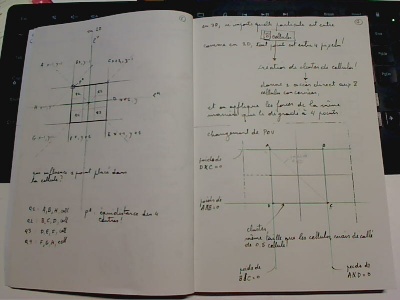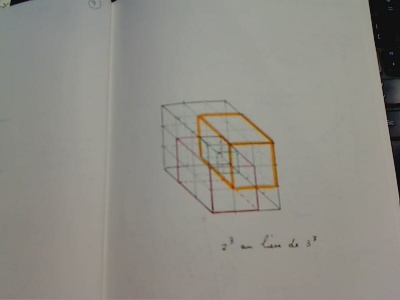WorkUnit:Particles Revision as of 19:08, 19 December 2017 by Frankiezafe (Talk | contribs)
Question here below is simple: how to produce moving images with colored dots. The idea has been experimented in several technical and visual forms, all based on the manipulation of simple basic entities.
Researches related to particles, in different context:
- colliding with a 3d model, researches of 2013
- in relation with a vector field, for Pelléas et Mélisande opéra.
Contents
Vector field as a controller
started on the 15 december 2017
Antialiasing 3d
It is about sub-sampling[1], or going from discrete to continuous[2], to avoid anti-aliasing[3], in fact.
Until this point, particles were influenced by only one cell currently, implying brutal trajectory's modification when the forces are different from one cell to the other...
It took me some time, but the issue is similar to an exercise I gave to the students at arts²: how to create a gradient between 4 points. In the vector field, the gradient has one more dimension but has the same behavior.
Any particle is always between 4 cells, let's call this a cluster. This cluster does not have to contains the totality of the cells, it must just connect the 4 centers. Therefore, a cluster has exactly the same size has a cell in the vector field, and its position is offset by an half cell. Too simple to see it at the first glance, because it requires to look at the space between center, and not the frontier of the cells (typical case where out-of-the-box thinking is required!).
History
Fragments #43-44
Fragments#43-44 blends musical improvisation, cinematic soundscapes as well as visuals generated on the fly by an intriguing new body language, src: http://fragments4344.uranium.be/
Colors’ flood on landscape
Demo, september 4, 2013
Resources
Cite error: <ref> tags exist, but no <references/> tag was found
































